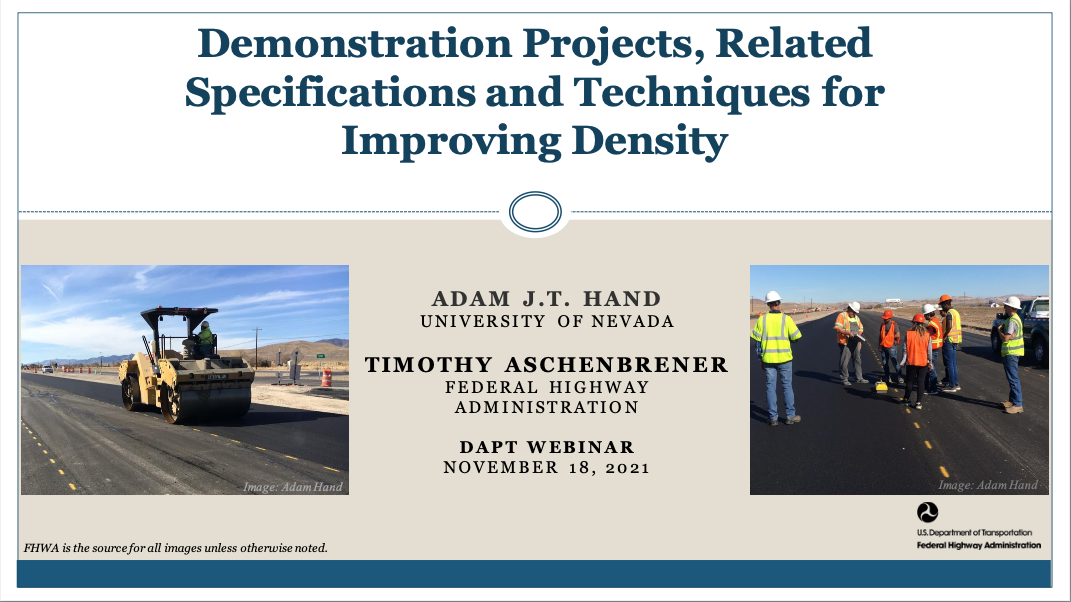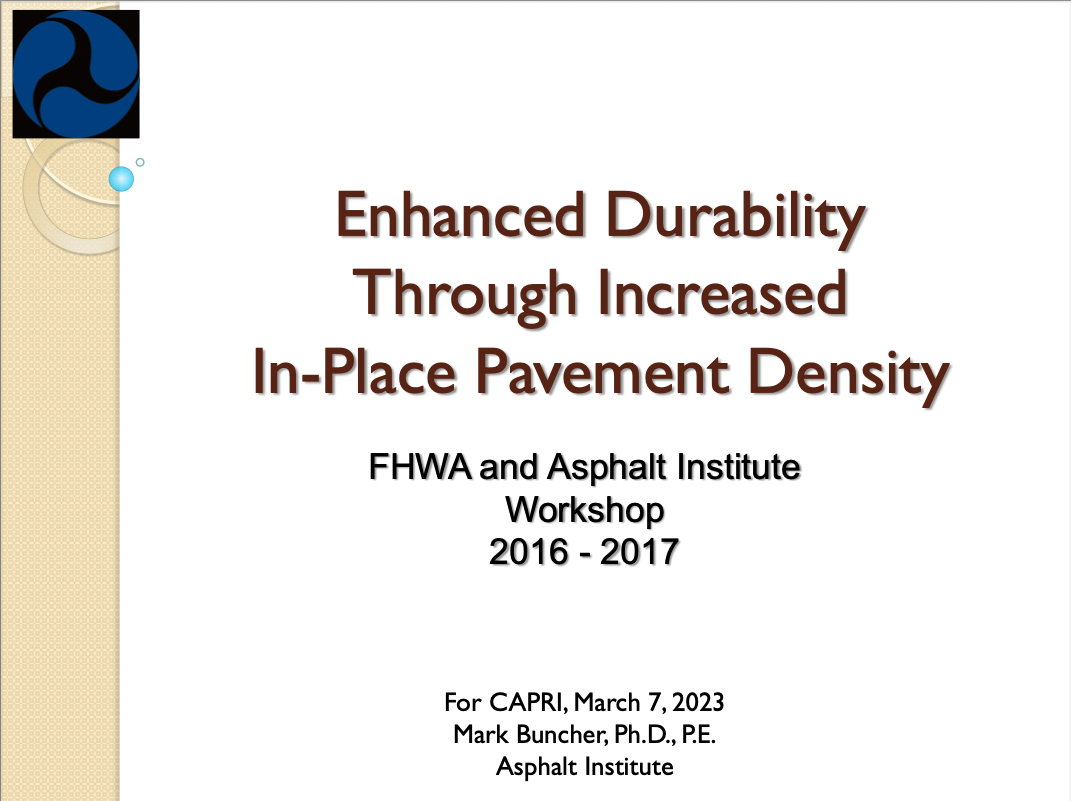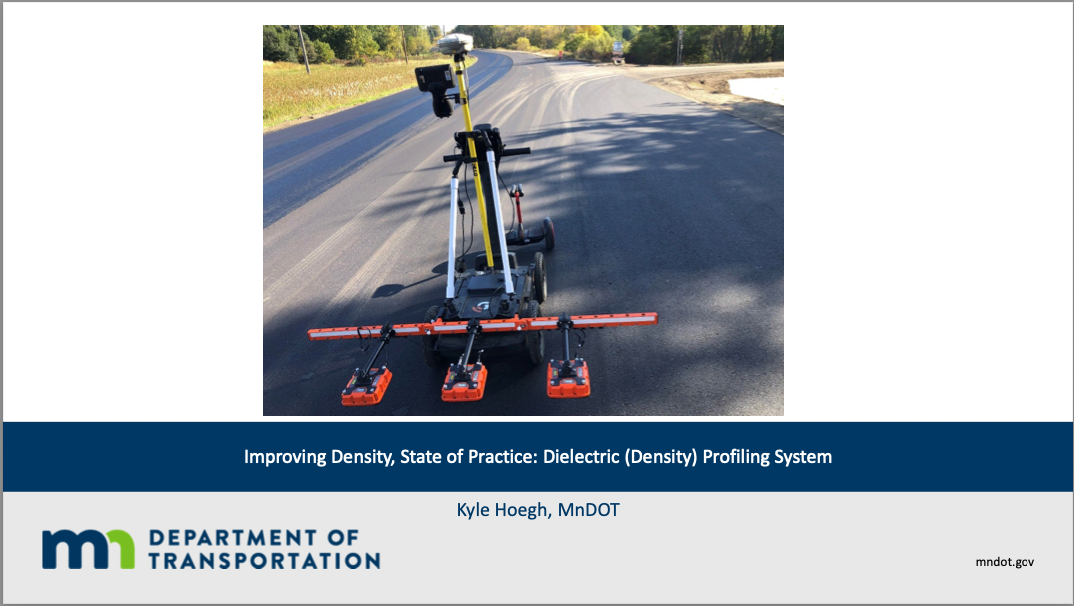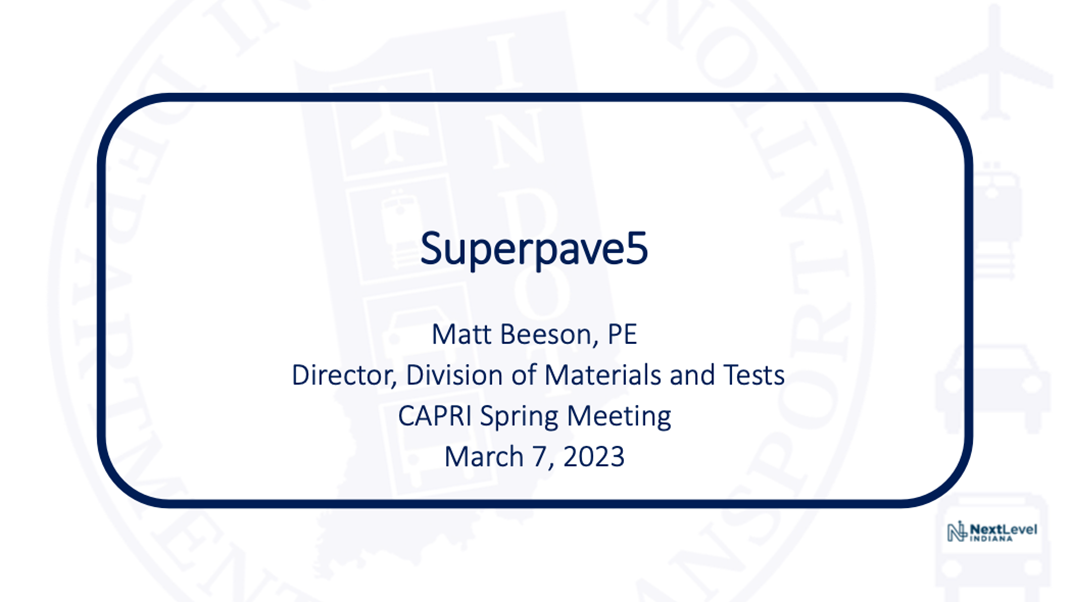Density
Density Resources
This list contains links to external pages that have valuable asphalt pavement density information.
Six Quick Keys to Acheive Density
FHWA Tech Brief: Overcoming Obstacles to Achieving Density (HIF 21-022)
FHWA Tech Brief: Techniques and Tools for Improving Density (HIF 21-021)
FHWA Tech Brief: Density Demonstration Projects and Related Specifications (HIF 21-020)
NCAT Report: FHWA Demonstration Project for Enhanced Durability of Asphalt Pavements Through Increased In-Place Pavement Density
Asphalt Institute: Increased In-Place Density Initiative (WebPage)
Meeting Presentations
Click on the images below to view or download presentations.
Demonstrations Project, Related Specifications and Techniques for Improving Density, Randy West
This presentation summarizes FHWA’s 29 demonstration projects related to increasing in-place density from 2016 to 2019. The presentation highlights good examples of specifications for in-place density and observations of common changes made in mix designs and construction operations that were used to increase density levels. FHWA Tech Briefs on this topic are referenced.
Enhanced Durability Through Increased In-Place Pavement Density, Mark Buncher
The Asphalt Institute partnered with the Federal Highway Administration (FHWA) to develop and deliver a one-day workshop titled: “Enhanced Durability through Increased In-Place Pavement Density.” These workshops were delivered to 25 state DOTs in 2016-2017 intended for both agency and industry personnel. The workshop demonstrated how pavement durability increases dramatically with small increases to in-place density as well as provided the most current information on how to achieve consistently high in-place densities.
Improving Density, State of Practice: Dielectric (Density) Profiling System, Kyle Hoegh
The presentation given at the CAPRI event covered the basics of the dielectric/density profiling systems (DPS) and how the method can be used to improve asphalt pavement density. This included 2 case studies from the 2022 construction season. The first case study showed how the on-site DPS analysis was used to improve paving operations on the same day of paving. The second case study showed how post-processing analysis in VETA with other ICT technology was used to provide the contractor with input necessary to achieve higher quality longitudinal joint density through improvement in their echelon paving process. Information on DPS training opportunities and advances made through the DPS pooled fund were also given.
Superpave5, Matt Beeson



